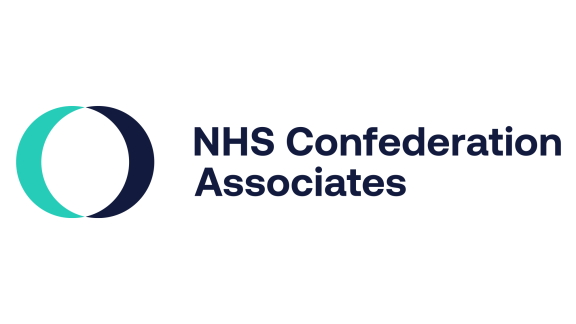NHS leaders warn that recorded cancellations as a result of industrial action are ‘the tip of the iceberg’

With junior doctors set to walkout for the fifth time this Friday and with the number of cancelled appointments and operations set to hit 1 million, NHS leaders in England are warning the government that a dangerous ‘business as usual’ approach is masking the true scale of the impact of industrial action on patients.
The NHS Confederation, which represents the whole healthcare system in England, Wales and Northern Ireland, has spoken to senior operations managers in hospitals and other parts of the NHS on the eve of the latest strike by doctors in training.
They warn that after nine months of industrial action and with no solution on the horizon for ending the strikes involving consultants and doctors in training, dealing with strike action has become ‘business as usual’ and is starting to store up long term problems.
They outline five big risks and are urging the government and unions to get back to the negotiating table, warning that the longer-term knock-on effects of repeated rounds of industrial action are not being recognised:
- Cancelled operations: The official figures for the number of cancelled operations and appointments since strike action started in December is 835,000 and is set to pass 1 million by the winter. However, senior operations managers say this is the tip of the iceberg, with the official figures only recording cancellations on the day. NHS trusts now routinely pre-empt the strikes by not filling slots that could otherwise be used for elective activity. That means operations and appointments are often not being booked in, which if calculated would place the number of cancelled procedures at a much higher level.
- Admin burden: With strike action among doctors in training and consultants now taking place each month, senior operations managers say they are spending around a third of their time on strike activities. From ensuring safe cover on the day, to the administrative impact of cancelling and rescheduling procedures. This is preventing them from undertaking other planned work that is designed to improve the quality and efficiency of services.
- Reducing waiting lists: The NHS has managed to ramp up elective activity from pre-pandemic levels (106% in May 2023 against the 2019/20 baseline), but leaders warn that they are being held back with recurrent industrial action starting to bite. Key elective targets are being put at risk, with the next milestone – that no patient will wait longer than 65 weeks by the end of March 2024 – in danger of being missed if strike action continues into another winter.
- Financial cost: Health leaders have again told the NHS Confederation of the mounting costs of industrial action. NHS organisations are routinely having to pay senior staff premium rates to cover striking staff for urgent and emergency care. NHS England estimates that the total cost of strike action so far is £360m. To compound the problem, some senior operations managers have told the NHS Confederation that they are unable to afford to deliver extra elective activity over weekends as they cannot cover higher ‘weekend rates and weekend theatre’ costs.
- Increased pressure across the NHS: This issue is often masked, but NHS Confederation members working in primary care and other parts of the NHS are increasingly having to deal with the fallout from patients who have had their planned operations cancelled, often multiple times. This is not only bad for patients but also increasing pressure on already fraught services that are delivered outside of hospital.
Matthew Taylor, chief executive of the NHS Confederation said: “Industrial action damage control has become a dangerous ‘business as usual’ for the NHS – the very situation we warned the government to avoid – and nine months into strike action we are as far away from a solution for doctors as we have ever been.
“Health leaders are doing everything possible to reduce waiting lists and meet key targets and have been ramping up elective activity against pre-Covid levels. But repeated rounds of industrial action are chipping away at the NHS’s ability to achieve future, more challenging, targets. Our message to the government is: imagine what the NHS could deliver if we could only find a way to bring strike action to an end.
“In the meantime, the long-term impact of strike action is starting to be felt. Some leaders have told us that staff have had to experience understandable frustrations from patients who have had their procedures cancelled, often multiple times. We fear this might get worse before it gets better, as the number of cancellations due to industrial action will soon reach 1 million.
“This is a huge number, but we know this is the tip of the iceberg as the official figures don’t fully take into account all the planned elective activity that would otherwise have been delivered.
“Our members have suggested that these cancellations may actually be having a 2 for 1 effect as when these operations are rearranged, they are knocking out other – usually less urgent – operations to accommodate them, meaning that a second patient suffers a further delay to their care.
“These are patients who may well end up in A&E or seek help from primary care as a result of complications or a worsening of their condition, having not been seen or treated due to a cancellation.
“But strike data just isn’t recording that so we could actually be seeing, in an absolute worst-case scenario, industrial action causing double the number of cancellations than what is being reported.
“We need to understand how much of an issue this is as it puts key elective targets at risk, and has implications for winter plans with additional pressure put on primary care and urgent and emergency care as a result of these ‘hidden’ patients waiting longer.”
Rory Deighton, director of NHS Confederation's Acute Network said: “Leaders are also extremely worried about how and when they are going to prepare for the future – not least this coming winter – with a disproportionate amount of their time taken up by industrial action. Some have estimated that it is taking up around a third of operations managers’ time, preventing them from undertaking other work that would improve productivity.
“They could be forgiven for wondering just how much progress they could’ve been made, and where the NHS might be now, had the situation been resolved sooner and their time not spent repeating lots of the same work.
“Leaders know that while industrial action is not the reason for record waiting lists, it is certainly not helping the situation, and with trusts now unable to seek agency cover for those on strike they are running out of moves to make that could see them sustain their efforts. They need to see this standoff move to an endgame.
“All parties say that nobody wants this situation, yet no one is talking to each other about how to put an end to it. We’ve got to see some further serious, responsible conversations happen soon that begin to chart a path out of this mess. Both sides need to look at what they can do to solve this ahead of what will be a seriously difficult winter, regardless of staff walkouts.”
About us
We are the membership organisation that brings together, supports and speaks for the whole healthcare system in England, Wales and Northern Ireland. The members we represent employ 1.5 million staff, care for more than 1 million patients a day and control £150 billion of public expenditure. We promote collaboration and partnership working as the key to improving population health, delivering high-quality care and reducing health inequalities.



